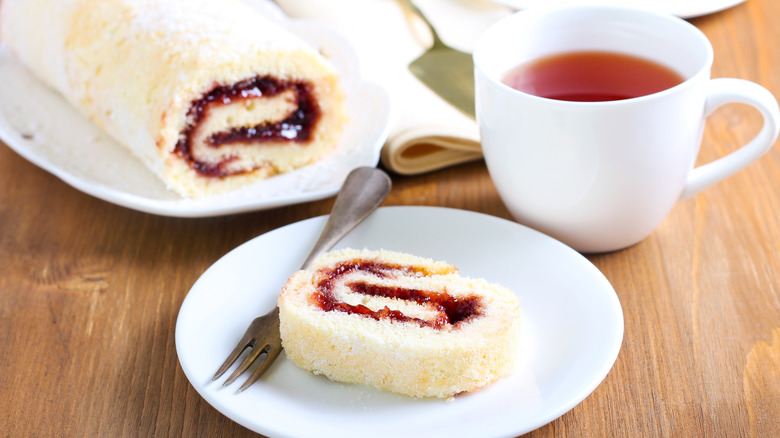The Unusual Way Jam Roly-Poly Used To Be Made
Oh, the joys of a jam roly-poly. A classic British treat that is nostalgic to many but still widely available. This sweet treat is made from a suet pastry dough which is covered with jam and then rolled up. Although we will get into further detail about an unusual hack for how these were once made, British Food History explains that traditionally the rolls were boiled in muslin, a cotton fabric. These days, however, many people either steam or bake the rolls to cook them through.
Although the British have a tradition of savory suet puddings that dates back to the middle ages, the original jam roly-poly appeared in the mid-1800s, when it became extremely popular (via the Guardian). The dessert is a unique pastry in that it is similar to a Swiss roll, but instead of cake, the boiled, baked, or steamed suet dough creates more of a pudding texture. Available now in many flavors, this treat has stayed a tried and true favorite for many. It sounds pretty straightforward, so what could be so unusual about a jam roly-poly?
A dead man's arm
Or, at least, that's the name given to this popular dessert — and it might not be for the reason you are thinking. The dessert was not made, of course, with a dead man's arm, but it was, however, often boiled in a shirt sleeve back in the day. Due to this, it was given the nick-name dead man's arm, a dead man's leg, or shirt-sleeve pudding (via Great British Puddings). While this is not the most appetizing way to describe food, it has found its way to staying popular for so long.
This dead man's arm is considered a classic British dessert alongside the likes of spotted dick pudding recipes and sticky toffee pudding. The roly-poly's versatility to be filled with endless flavors of jams and custards makes it an easy dessert to please any crowd. These days people enjoy it in its traditional form using suet, but a few are even trying to make it vegetarian (via The Spectator). Think that jam roly-poly could be for you? Give it a try and make some at home; maybe even try creating it in a shirt sleeve for old-time's sake!

